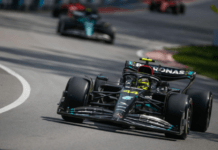The overall appeal of sports betting often hinges on the enticing prospects of lucrative payouts. However, the mechanism behind the scenes determining these payouts remains a mystery to many. Researching the particulars of the betting world, we aim to demystify the complex process of how payouts are calculated on sports betting platforms, especially for newcomers who might be looking to make great use of the currently available free bets and profit from bookmakers’ extensive promotions.
Odds and Stakes: The Cornerstones of Payouts
Odds are the bedrock of sports betting, representing the probability of a particular outcome. They dictate the potential return on a bet. The higher the odds, the less likely the event is perceived to happen. However, the payout is considerably higher if the outcome does occur.
Stakes denote the amount a bettor is willing to wager on an event. The potential payout is a straightforward multiplication of the odds by the stake. So, for an event with odds of 5/1, a wager of £10 would result in a potential payout of £60 (£50 winnings plus your initial £10).
Bet Types: Payout Variations Based on Selections
Different types of bets come with their distinct calculation methodologies. Here’s a concise breakdown:
- Single Bets: Payout is calculated by multiplying the odds by the stake.
- Double Bets: Involves two selections. Both must win for you to get a return. The stake is multiplied by the odds of the first selection, and the resulting amount becomes the stake for the second selection.
- Accumulator Bets: These involve multiple selections. The return from each selection is automatically staked on the next, accumulating potentially massive payouts.
- Each-Way Bets: This divides the stake between a win bet and a place bet. The return is calculated separately for each part and then combined.
- System Bets: These are made up of several bet types and combinations of selections. Calculations are a bit more complex and vary based on the specific system chosen.
Overround and Bookmakers’ Margin: The Hidden Dynamics
Bookmakers are businesses, and like all businesses, they aim to make a profit. The overround is a tool that ensures, theoretically, that a bookmaker will always make a profit regardless of the outcome of an event. In essence, it’s the combined total percentage probability of all outcomes in a particular market.
- A perfectly fair book would be set at 100%, but bookmakers set their markets above that figure to ensure they turn a profit.
The difference between the 100% figure and the actual total percentage represents the bookmaker’s margin or the vig. This margin allows bookmakers to offer odds that slightly undervalue every potential outcome of an event. So, while odds provide a glimpse into the potential payouts for the bettors, they are also strategically set to ensure the house has an edge.
Conclusion: Informed Betting is the Best Strategy
With a clearer understanding of how payouts are calculated, bettors are better equipped to strategise and maximise potential returns. Grasping the nuances of odds, the diversity of bet types, and the dynamics of overrounds empowers bettors to traverse the landscape of sports betting smoothly. The equation behind the enticing payout figures is no longer unclear. Armed with this knowledge, exploring platforms like those in up-to-date selection of UK betting sites becomes an informed and strategic endeavour, aligning with the wise saying – knowledge is indeed power.
















